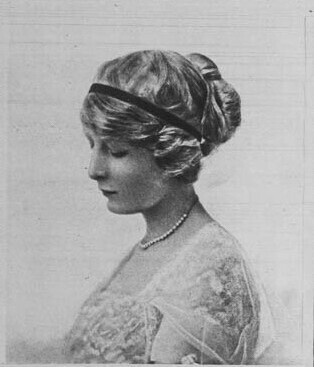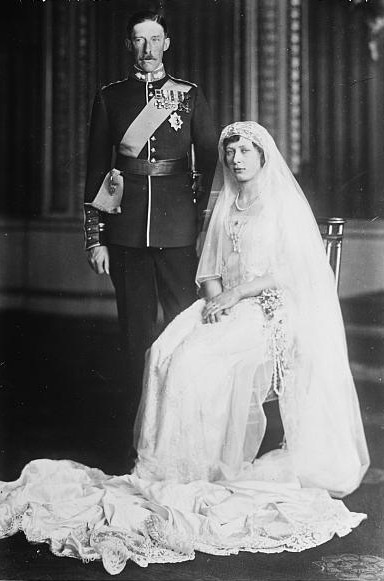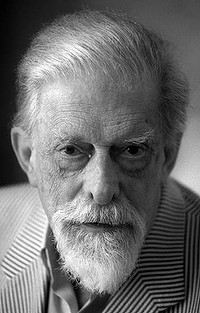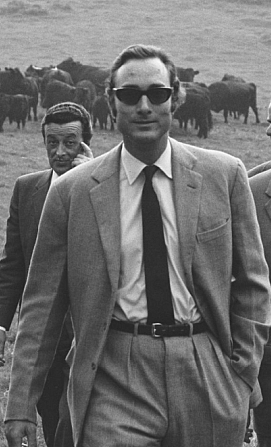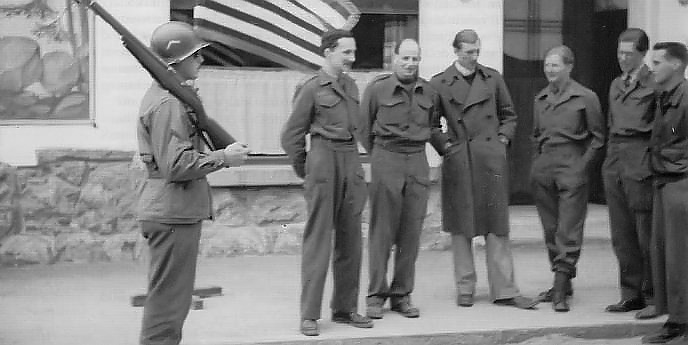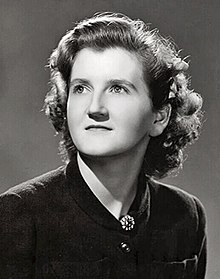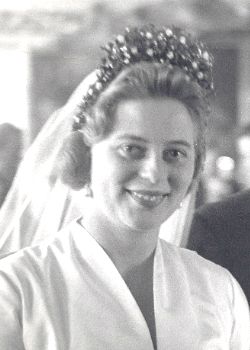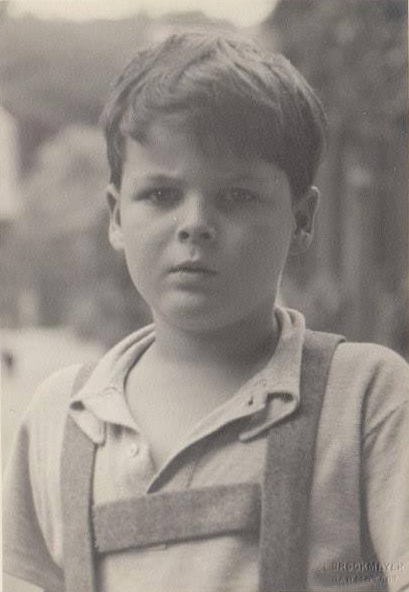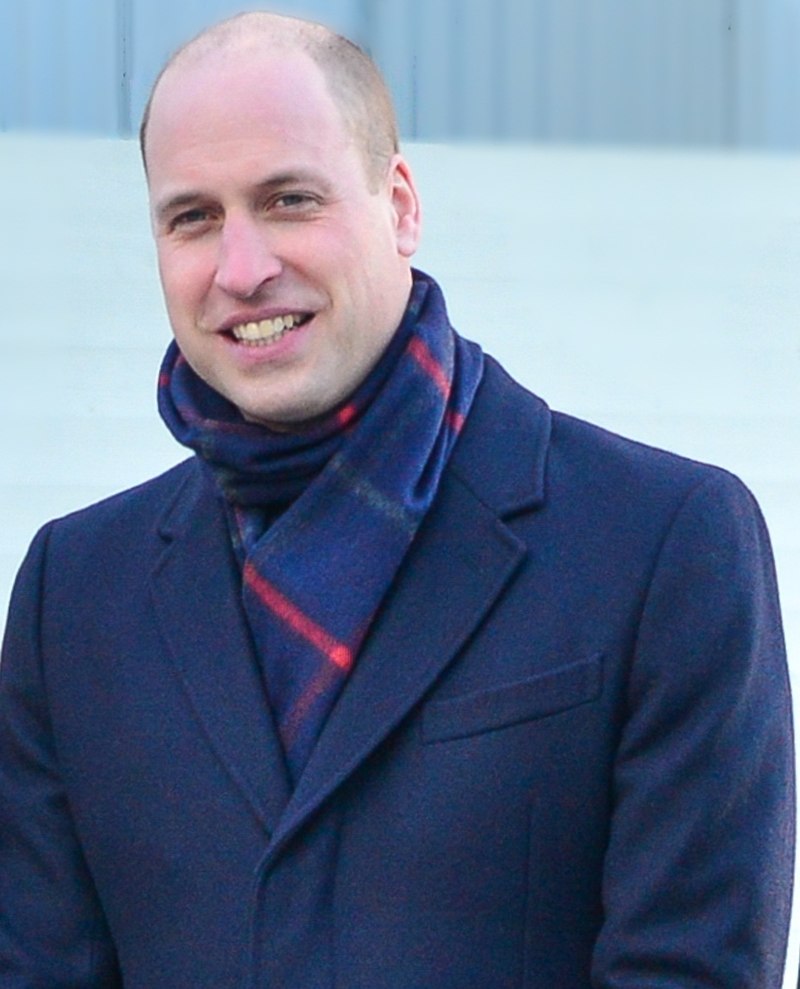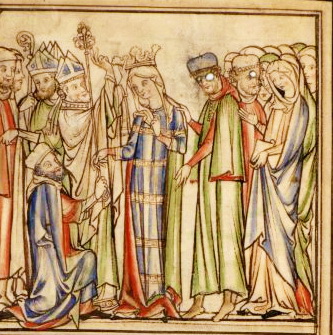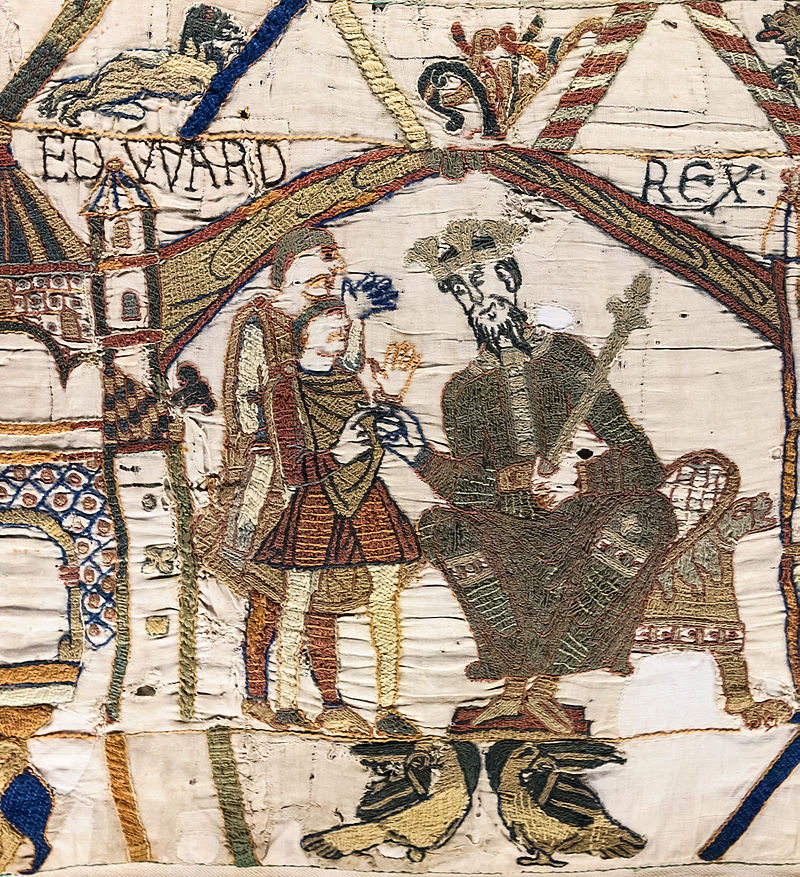by Susan Flantzer
© Unofficial Royalty 2019

King George V of the United Kingdom (1865 – 1936)
(All photos credits – Wikipedia unless otherwise noted)
King George V of the United Kingdom was born on June 3, 1865, a month early, at Marlborough House in London, England. He was the second son and the second of the six children of King Edward VII and his wife Alexandra of Denmark, who were the Prince and Princess of Wales at that time. Queen Victoria of the United Kingdom and Prince Albert of Saxe-Coburg and Gotha were George’s paternal grandparents. His maternal grandparents were King Christian IX of Denmark and Princess Louise of Hesse-Kassel. George’s elder brother Prince Albert Victor, Duke of Clarence, known as Eddy, was expected to become king. However, Eddy died of pneumonia at the age of 28 and George became second in the line of succession after his father. George married Princess Victoria Mary of Teck, his deceased brother’s fiancee, and had five sons and one daughter.
The children and grandchildren of George’s paternal grandmother Queen Victoria married into other European royal families giving Victoria the unofficial title of “Grandmother of Europe.” Her grandchildren sat upon the thrones of Germany/Prussia, Greece, Norway, Romania, Russia, Spain, and the United Kingdom as monarchs or consorts. Similarly, George’s paternal grandfather King Christian IX of Denmark can be called the “Grandfather of Europe. His grandsons were the monarchs of Denmark, Greece, Norway, Russia, and the United Kingdom.
King George V had 34 paternal first cousins and 33 maternal first cousins for a total of 67 first cousins. He shares his first cousins with his siblings Prince Albert Victor, Duke of Clarence; Princess Louise, Princess Royal, Duchess of Fife; Princess Victoria; Princess Maud, Queen of Norway; and Prince Alexander John.
Because King George V has so many cousins and because Unofficial Royalty has articles on all of Queen Victoria’s children, grandchildren, and their spouses and on all of King Christian IX’s children and many of his grandchildren and Wikipedia has articles on the others, this article will be a list on the cousins, with some information and an Unofficial Royalty link or a Wikipedia link where more information can be found.
********************
Paternal Aunts and Uncles of King George V: Children of Queen Victoria of the United Kingdom and Prince Albert of Saxe-Coburg and Gotha

Queen Victoria, Prince Albert and their nine children in 1857
- Victoria, Princess Royal (1840-1901) married (1858) Friedrich III, German Emperor and King of Prussia (1831-1888), had four sons and four daughters
- Princess Alice (1843-1878) married (1862) Ludwig IV, Grand Duke of Hesse and by Rhine(1837-1892), had two sons and five daughters
- Prince Alfred, Duke of Edinburgh, Duke of Saxe-Coburg and Gotha (1844-1900) married (1874) Grand Duchess Marie Alexandrovna of Russia (1853-1920), had one son and four daughters
- Princess Helena (1846-1923) married (1866) Prince Christian of Schleswig-Holstein (1831-1917), had two sons and two daughters
- Princess Louise (1848-1939) married (1871) John Campbell, Marquess of Lorne, 9th Duke of Argyll (1845-1914); no issue
- Prince Arthur, Duke of Connaught (1850-1942) married (1879) Princess Louise Margaret of Prussia (1860-1917), had one son and two daughters
- Prince Leopold, Duke of Albany (1853-1884) married (1882) Princess Helena of Waldeck and Pyrmont (1861-1922), had one son and one daughter
- Princess Beatrice (1857-1944) married (1885) Prince Henry of Battenberg (1858-1896), had three sons and one daughter
********************
Maternal Aunts and Uncles of King George V: Children of King Christian IX of Denmark and Princess Louise of Hesse-Kassel

Christian IX, King of Denmark and his family by Georg Emil Hansen, albumen carte-de-visite photomontage, 1862, NPG x74402 © National Portrait Gallery, London
- King Frederik VIII of Denmark (1843 – 1912), married (1869) Princess Louise of Sweden, (1851 – 1926), had issue
- Prince Vilhelm of Denmark, who became King George I of Greece (1845 – 1913), married (1867) Grand Duchess Olga Konstantinovna of Russia, (1851 – 1926), had issue
- Princess Dagmar of Denmark, Maria Feodorovna after marriage (1847 – 1928), married (1866) Alexander III, Emperor of All Russia (1845 – 1894), had issue
- Princess Thyra of Denmark (1853 – 1933), married (1878) Crown Prince Ernst August of Hanover, 3rd Duke of Cumberland and Teviotdale, (1845 – 1923), had issue
- Prince Valdemar of Denmark (1858 – 1939), married (1885) Princess Marie of Orléans (1865 – 1909), had issue
********************
PATERNAL FIRST COUSINS
Paternal First Cousins: Children of Victoria, Princess Royal and Friedrich III, German Emperor and King of Prussia

Family of The Crown Prince and Princess of Prussia in 1875
- Wilhelm II, German Emperor and King of Prussia (1859-1941) married (1) (1881) Princess Augusta Victoria of Schleswig-Holstein-Sonderburg-Augustenburg (1858-1921), had issue, Greek and Spanish Royal Families descend from this marriage; married (2) (1922) Princess Hermine of Reuss (1887-1947), no issue
- Princess Charlotte of Prussia (1860-1919) married (1878) Bernhard III, Duke of Saxe-Meiningen (1851-1928), had issue
- Prince Heinrich of Prussia (1862-1929) married (1888) Princess Irene of Hesse and by Rhine (1866-1953), a grandchild of Queen Victoria, had issue
- Prince Sigismund of Prussia (1864-1866), died young from meningitis
- Princess Viktoria of Prussia (1866-1929), married (1) (1890) Prince Adolf of Schaumburg-Lippe (1859-1917), no issue; married (2) (1927) Alexander Zoubkoff (1901-1936), no issue
- Prince Waldemar of Prussia (1868-1879), died young from diphtheria
- Princess Sophie of Prussia (1870-1932), married (1889) King Constantine I of Greece (1868-1923), had issue, Greek, Romanian, Serbian, and Spanish Royal Families descend from this marriage
- Princess Margarete of Prussia (1872-1954), (1893) married Prince Friedrich Karl of Hesse(1868-1940), had issue
********************
Paternal First Cousins: Children of Princess Alice of the United Kingdom and Ludwig IV, Grand Duke of Hesse and by Rhine

Hesse and by Rhine family in 1876
- Princess Victoria of Hesse and by Rhine (1863-1950), married (1884) Prince Louis of Battenberg (1854-1921) after 1917 Louis Mountbatten 1st Marquess of Milford Haven, had issue, British Royal Family (line of Prince Charles, Prince of Wales) descends from this marriage
- Princess Elisabeth of Hesse and by Rhine (1864-1918), married (1885) Grand Duke Sergei Alexandrovich of Russia (1857-1905), no issue
- Princess Irene of Hesse and by Rhine (1866-1953), married (1888) Prince Heinrich of Prussia (1862-1929), a grandchild of Queen Victoria, had issue
- Ernst Ludwig, Grand Duke of Hesse and by Rhine (1868-1937), married (1) (1894) Princess Victoria Melita of Edinburgh (1876-1936), a grandchild of Queen Victoria, had issue, divorced 1901; married (2) (1905) Princess Eleanore of Solms-Hohensolms-Lich (1871-1937), had issue
- Prince Friedrich of Hesse and by Rhine (1870-1873), was a hemophiliac, died young from a brain hemorrhage after falling out a window
- Princess Alix of Hesse and by Rhine (1872-1918), married (1894) Nicholas II, Emperor of All Russia (1868-1918), had issue (all died 1918)
- Princess Marie of Hesse and by Rhine (1874-1878), died young from diphtheria
********************
Paternal First Cousins: Children of Prince Alfred, Duke of Edinburgh, Duke of Saxe-Coburg and Gotha and Grand Duchess Marie Alexandrovna of Russia

The Duchess of Edinburgh with her children
- Prince Alfred of Edinburgh, Hereditary Prince of Saxe-Coburg and Gotha (1874-1899), died unmarried, attempted suicide by shooting himself, later died from the injuries
- Princess Marie of Edinburgh (1875-1938), married (1893) King Ferdinand of Romania (1865-1927), had issue, Romanian and Serbian Royal Families descend from this marriage
- Princess Victoria Melita of Edinburgh (1876-1936), married (1) (1894) Ernst Ludwig, Grand Duke of Hesse and by Rhine (1862-1937), a grandchild of Queen Victoria, had issue, divorced 1901; married (2) (1905) Grand Duke Kirill Vladimirovich of Russia (1876-1938), had issue
- Princess Alexandra of Edinburgh (1878-1942), married (1896) Prince Ernst II of Hohenlohe-Langenburg (1863-1950); had issue
- Princess Beatrice of Edinburgh (1884-1966), married (1909) Infante Alfonso of Spain, Duke of Galliera (1886-1975), had issue
********************
Paternal First Cousins: Children of Princess Helena and Prince Christian of Schleswig-Holstein

Photo Credit – royal-splendor.blogspot.com
- Prince Christian Victor of Schleswig-Holstein (1867-1900), died unmarried of malaria while serving in the Boer War
- Prince Albert, Duke of Schleswig-Holstein (1869-1931), died unmarried, had illegitimate issue
- Princess Helena Victoria (1870-1948), Princess of Schleswig-Holstein 1870-1917, Princess Helena Victoria 1917-1948, died unmarried
- Princess Marie Louise (1872-1956), Princess of Schleswig-Holstein 1870-1917, Princess Marie Louise 1917-1956, married (1891) Prince Aribert of Anhalt, no issue, marriage dissolved 1900
- Prince Harald of Schleswig-Holstein (1876), died in infancy
********************
Paternal First Cousins: Children of Prince Arthur, Duke of Connaught and Princess Louise Margaret of Prussia

Connaught Family in 1893
- Princess Margaret of Connaught (1882-1920), married (1905) Crown Prince Gustaf Adolf of Sweden (1882-1973), had issue, Margaret died before her husband became King Gustaf VI Adolf of Sweden, Danish, and Swedish Royal Families descend from this marriage
- Prince Arthur of Connaught (1883-1938), married Princess Alexandra, Duchess of Fife (1891-1959), a great-granddaughter of Queen Victoria, had issue
- Princess Patricia of Connaught (1886-1974), married (1919) The Honorable Alexander Ramsay (1881-1972), had issue, upon her marriage Patricia voluntarily relinquished her title of Princess and her style Royal Highness and was known as Lady Patricia Ramsay
********************
Paternal First Cousins: Children of Prince Leopold, Duke of Albany and Princess Helena of Waldeck and Pyrmont

The Duchess of Albany with her two children in 1887; Credit – http://www.nationalarchives.gov.uk/
- Princess Alice of Albany (1883-1981), married (1904) Prince Alexander of Teck (1874-1957) after 1917 Alexander Cambridge, 1st Earl of Athlone, had issue
- Prince Charles Edward, Duke of Albany, Duke of Saxe-Coburg and Gotha (1884-1954), deprived of British titles in 1919, married (1905) Princess Victoria Adelaide of Schleswig-Holstein (1885-1970), had issue, Swedish Royal Family descends from this marriage
********************
Paternal First Cousins: Children of Princess Beatrice and Prince Henry of Battenberg

Princess Beatrice with her children in 1900
- Prince Alexander of Battenberg (1886-1960), after 1917 Alexander Mountbatten, Marquess of Carisbrooke, married (1917) Lady Irene Denison (1890-1956), had issue
- Princess Victoria Eugenie of Battenberg (1887-1969), married (1906) King Alfonso XIII of Spain (1886-1931), had issue, Spanish Royal Family descends from this marriage
- Prince Leopold of Battenberg (1889-1922), after 1917 Lord Leopold Mountbatten, died unmarried, hemophiliac, died after an operation
- Prince Maurice of Battenberg (1891-1914), died unmarried, killed in action during the First World War
*********************
MATERNAL FIRST COUSINS
Maternal First Cousins: Children of King Frederik VIII of Denmark and Princess Louise of Sweden

Frederick VIII, King of Denmark with his family by Elfelt, bromide postcard print, (circa 1877), NPG x74398 © National Portrait Gallery, London
- King Christian X of Denmark (1870 -1947), married (1898) Alexandrine of Mecklenburg-Schwerin (1879 – 1952), had issue, Danish Royal Family descends from this marriage
- Prince Carl of Denmark, later King Haakon VII of Norway (1872 – 1957), married (1896) Princess Maud of Wales (1869 – 1938), daughter of King Edward VII of the United Kingdom, had one son, Norwegian Royal Family descends from this marriage
- Princess Louise of Denmark (1875 – 1906) married (1896) Prince Friedrich of Schaumburg-Lippe, (1868 – 1945), had issue
- Prince Harald of Denmark (1876 – 1949) married (1909) Princess Helena Adelaide of Schleswig-Holstein-Sonderburg-Glücksburg (1888 -1962) had issue
- Princess Ingeborg of Denmark (1878 – 1958), married (1897) Prince Carl of Sweden, Duke of Västergötland, (1861 – 1951), had issue, Norwegian Royal Family and Belgian Royal Family descend from this marriage
- Princess Thyra of Denmark (1880 – 1945), unmarried
- Prince Gustav of Denmark (1887 – 1944), unmarried
- Princess Dagmar of Denmark (1890 – 1961) married (1922) Jørgen Castenskiold (1893- 1978), had issue
*********************
Maternal First Cousins: Children of Prince Vilhelm of Denmark, King George I of Greece and Grand Duchess Olga Konstantinovna of Russia

King George and Queen Olga with six of their children, circa 1890
- King Constantine I of Greece (1868 – 1923) married (1889) Princess Sophie of Prussia (1870 –1932), had issue, Greek Royal Family descends from this marriage
- Prince George of Greece (1869 – 1957) married (1907) Princess Marie Bonaparte (1882 – 1962) had issue
- Princess Alexandra of Greece (1870 – 1891) married (1889) Grand Duke Paul Alexandrovich of Russia (1860 – 1919), executed during the Russian Revolution, had issue
- Prince Nicholas of Greece (1872 – 1938) married (1902) Grand Duchess Elena Vladimirovna of Russia (1882 – 1957), had issue
- Princess Maria of Greece (1876 – 1940) married (1900) (1) Grand Duke George Mikhailovich of Russia (1863 – 1919), executed during the Russian Revolution, had issue; married (1922) (2) Admiral Perikles Ioannidis (1881 – 1965), no issue
- Princess Olga (born and died 1880) died in infancy
- Prince Andrew of Greece (1882 – 1944) married (1903) Princess Alice of Battenberg, (1885 – 1969), had issue, parents of Prince Philip, Duke of Edinburgh, British Royal Family descends from this marriage
- Prince Christopher of Greece (1888 – 1940) married (1920) (1) Nancy Stewart Worthington Leeds (1878 – 1923), no issue; married (1929) (2) Princess Françoise of Orléans, (1902 – 1953), had issue
*********************
Maternal First Cousins: Children of Princess Dagmar of Denmark, Maria Feodorovna after marriage, and Alexander III, Emperor of All Russia

Russian Imperial Family in 1888, Photo Credit – Wikipedia
- Nicholas II, Emperor of All Russia (1868 – 1918), married (1894) Princess Alix of Hesse and by Rhine (Alexandra Feodorovna) (1872 – 1918), had five children, the entire family was executed during the Russian Revolution
- Grand Duke Alexander Alexandrovich (1869 – 1870), died young of meningitis
- Grand Duke George Alexandrovich (1871 – 1899), unmarried, died of tuberculosis
- Grand Duchess Xenia Alexandrovna (1875 – 1960), married (1894) Grand Duke Alexander Mikhailovich of Russia, (1866 – 1933), had seven children
- Grand Duke Michael Alexandrovich (1878 – 1918), married (1912) Natalia Sergeyevna Sheremetyevskaya, Countess Brasova (1880 – 1952), had one child
- Grand Duchess Olga Alexandrovna (1882 – 1960), married (1901) (1) Peter Friedrich Georg, Duke of Oldenburg (1868 – 1924), no children, marriage annulled 1916; married (1916) (2) Nikolai Kulikovsky, (1881 – 1958), had two children
*********************
Maternal First Cousins: Children of Princess Thyra of Denmark and Crown Prince Ernest Augustus of Hanover, 3rd Duke of Cumberland and Teviotdale

Thyra with her husband and children
- Princess Marie Louise of Hanover (1879 – 1948), married (1900) Prince Maximilian of Baden, (1867 – 1929) had two children
- Prince Georg Wilhelm of Hanover (1880 – 1912), unmarried, killed in a car accident
- Princess Alexandra of Hanover (1882 – 1963) married (1904) Friedrich Franz IV, Grand Duke of Mecklenburg-Schwerin (1882 – 1945), had five children
- Princess Olga of Hanover (1884 – 1958), unmarried
- Prince Christian of Hanover (1885 – 1901), died from peritonitis
- Ernst Augustus, Duke of Brunswick (1887 – 1953), married (1913) Princess Viktoria Luise of Prussia, (1892 – 1980), had five children, Greek Royal Family descends from this marriage
*********************
Maternal First Cousins: Children of Prince Valdemar of Denmark and Princess Marie of Orléans

Valdemar, Marie, and their children; Photo Credit – www.findagrave.com
- Prince Aage of Denmark (1887 – 1940), married (1914) Matilda Calvi dei conti di Bergolo (1885 – 1949), due to the unequal marriage, he renounced his place in the line of succession to the Danish throne, forfeited the title Prince of Denmark, and was then titled Prince Aage, Count of Rosenborg; had one son, divorced 1939
- Prince Axel of Denmark (1888 – 1964), married (1919) Princess Margaretha of Sweden (1899 – 1977), had two sons
- Prince Erik of Denmark (1890 – 1950), married (1924) Lois Frances Booth (1897 – 1941), a Canadian, due to the unequal marriage, he renounced his place in the line of succession to the Danish throne, forfeited the title Prince of Denmark, and was then titled Prince Erik, Count of Rosenborg, had one son and one daughter, divorced 1937
- Prince Viggo of Denmark (1893 – 1970), married (1924) Eleonor Green (1895 – 1966), an American, due to the unequal marriage, he renounced his place in the line of succession to the Danish throne, forfeited the title Prince of Denmark, and was then titled Prince Viggo, Count of Rosenborg, had no children
- Princess Margrethe of Denmark (1895 – 1992), married (1921) Prince René of Bourbon-Parma (1894 – 1962), had three sons and one daughter
*********************
This article is the intellectual property of Unofficial Royalty and is NOT TO BE COPIED, EDITED, OR POSTED IN ANY FORM ON ANOTHER WEBSITE under any circumstances. It is permissible to use a link that directs to Unofficial Royalty.
Works Cited
- Lundy, D. (2019). Main Page. [online] Thepeerage.com. Available at: http://www.thepeerage.com/. (for genealogy information)
- Unofficial Royalty. (2019). Unofficial Royalty. [online] Available at: https://www.unofficialroyalty.com. (for biographical and genealogy information)
- Wikipedia. (2019). Main Page. [online] Available at: https://en.wikipedia.org/. (for biographical and genealogy information)







